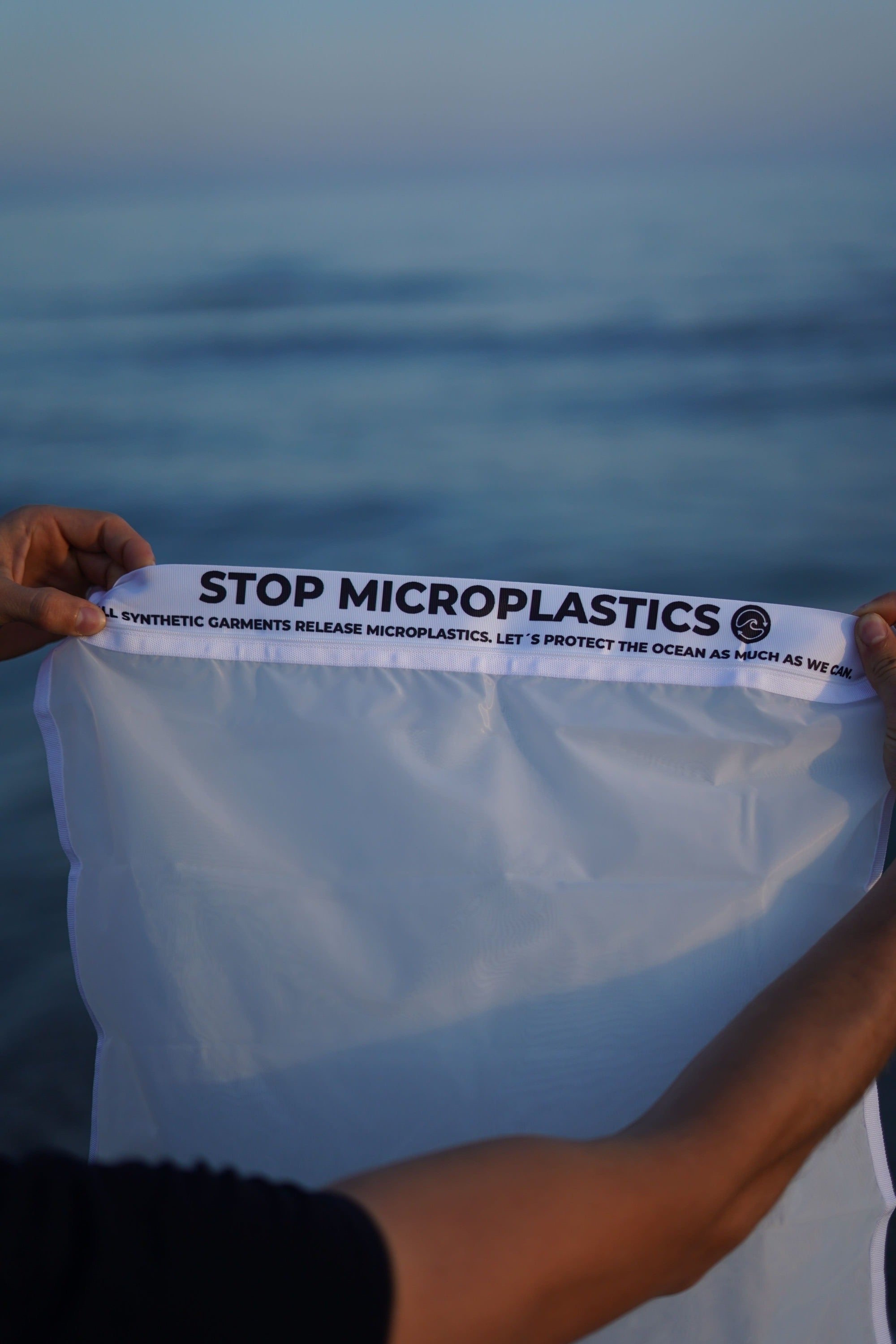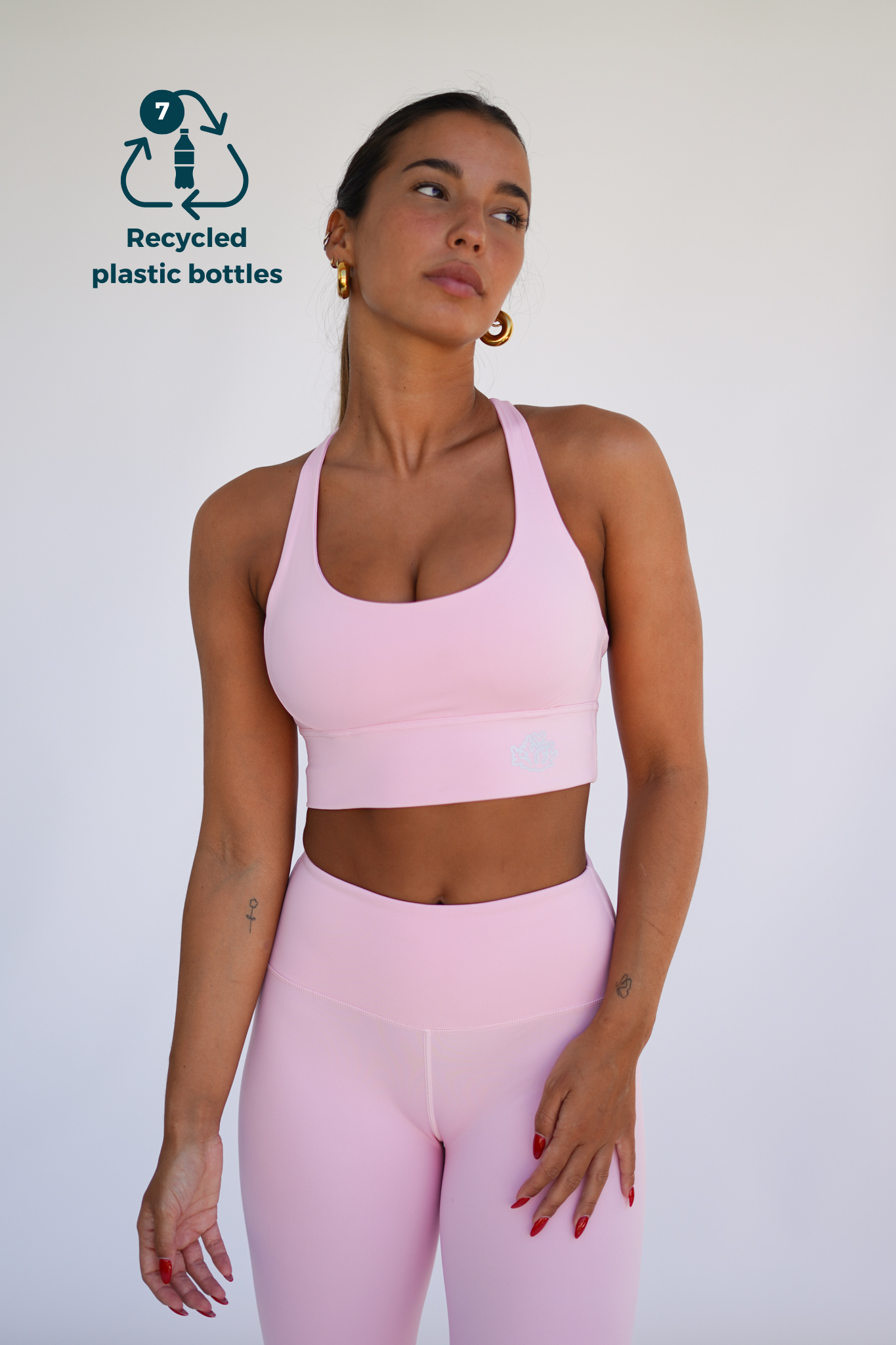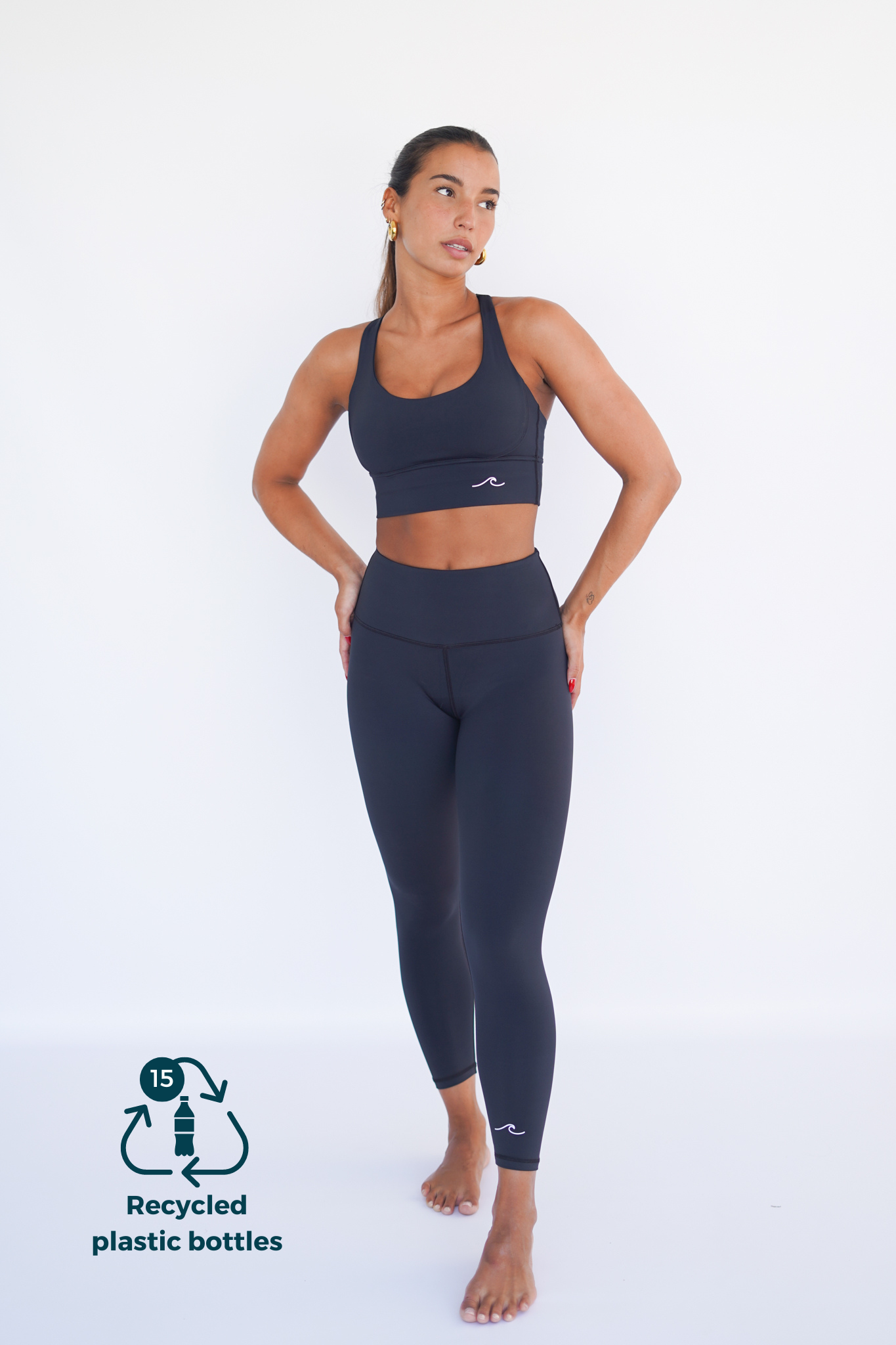
Microplastics: What they are, where they are found and how to eliminate them
Microplastics have become a global environmental concern due to their ubiquity and persistence in our environment. These pollutants invisible to our eyes are present in the air, water and in many everyday products, affecting both the environment and our health. But what can we do to reverse the situation? Throughout the following article we will not only explain what microplastics are, but we will also tell you everything you can do to reduce their presence over time.
What are microplastics?

Microplastics are small pieces of plastic, less than 5 millimeters in diameter, which contaminate the environment, among other things. They originate from the fragmentation of larger plastic objects, such as bags, bottles, packaging and other waste, or are produced intentionally for use in various products.
They are a growing problem, since their tiny size allows them to enter ecosystems where it was previously impossible, such as the interior of living organisms. This is generating great concern about its potential environmental and health impacts on both us and animals.
What types of microplastics exist?
Currently, there are two main classifications for microplastics, which are:
Primary microplastics
Intentionally produced for use in various products, such as cosmetic scrubs, toothpastes, synthetic clothing, and tires. They are usually larger than secondary microplastics (up to 1 mm).
Secondary microplastics
They are derived from the fragmentation of larger plastic objects, such as bags, bottles, packaging and other waste. They can be even smaller than primary microplastics (less than 1 mm, even down to nanoparticle size).
How do microplastics affect the environment?
Microplastics can derive from primary sources, such as microbeads used in personal care products, or from secondary sources, such as the degradation of larger plastic objects, but neither is worse or more harmful than the other. The problem with them is that there are too many of them, everywhere and in the daily lives of billions of people and animals. It is this accumulation or this volume, which has already generated problems and which, therefore, will continue to generate exponentially. But how exactly do microplastics affect the environment? We explain it to you:
Impact on aquatic ecosystems
A large amount of microplastics end up in oceans and freshwater bodies. Due to their tiny size, these fragments are ingested by a wide variety of aquatic organisms. The ingestion of microplastics can obstruct the digestive tracts, reduce feeding capacity and cause a false feeling of satiety, which affects the health and survival of these organisms. animals. Additionally, microplastics can act as vectors for chemical contaminants, carrying toxins and heavy metals that adhere to their surfaces, further compounding the negative impact on marine life.
Transmission in the food chain
The effects of microplastics are not limited to aquatic organisms. By being consumed by fish and other marine animals that are part of the human diet, they also manage to enter our food chain. This raises concerns about the bioaccumulation of plastics and their toxic additives, with possible health consequences, including damage to the endocrine system and carcinogenic effects. But not only do they reach our diet in this way, the use of plastics in food production, packaging and so on also causes tiny particles to accumulate that accumulate over time.
Effects on soil and agriculture
Microplastics are also found in agricultural soils due to the application of sewage sludge, contaminated fertilizers and the decomposition of agricultural plastic products. These plastics alter the physical properties of the soil, consequently altering its water and nutrient retention capacity, and potentially inhibiting plant growth. In addition, soil organisms, such as earthworms and other invertebrates, which coexist symbiotically with the soil, are also altered.
Impact on air quality
Recent studies have shown that microplastics are also present in the atmosphere. Plastic particles are carried by wind and precipitated in remote areas, such as mountains and polar regions, affecting air quality and contributing to environmental pollution in places previously considered pristine.
Where are microplastics found in the home?
In case it was not already clear to you, microplastics are present in a wide variety of products and places inside and outside the home, often without us as residents being aware of their existence. Some of the main sources of microplastics in the home include:
Clothing
Synthetic fibers, such as polyester, nylon and acrylic, used in the manufacture of sustainable women's clothing , are a very significant source of microplastics. During washing, these fibers manage to break off and enter the wastewater system. Wastewater treatment plants are often not able to effectively filter these fibers, resulting in their release into the aquatic environment.
Personal care products
Many personal care products, such as facial scrubs, toothpastes and shower gels, contain plastic microbeads that are used for their abrasive properties. These microbeads are too small to be trapped by wastewater filtration systems and end up in bodies of water, thus contributing to microplastic pollution.
Cleaning articles
Cleaning products, such as washing powders and scouring products, also contain microplastics that are used as abrasive or filler agents. These products release plastic particles during use and disposal, therefore adding more microplastics to the environment.
Containers and packaging
Plastic containers and packaging materials, such as plastic bags, food containers and bottles, break down into smaller particles over time or if we cut them. Although we may not be able to see it, these actions release plastic particles.
Utensils, equipment and furniture
Kitchen utensils and equipment made of plastic, such as cutting boards, spatulas and mixers, release microplastics due to wear and abrasion during daily use. Upholstered furniture and home decor that contain synthetic materials can also shed microplastic fibers and particles.
Tips to reduce microplastic pollution

Reducing microplastic pollution is a task that requires both individual and collective efforts and a lot of education in this regard. As consumers we must begin to make more conscious decisions and understand that to purchase a product, a series of processes must be followed that are often not the most friendly to our planet and our environment. It is this awareness or this responsibility of purchase and consumption that will make the difference, so here are some tips to reduce pollution of what you can start doing in your daily life:
Opt for clothing from environmentally conscious brands
When purchasing sustainable sportswear , choose items made from natural fibers such as cotton, wool, linen or bamboo that have been produced ethically. You can also opt for clothing such as women's sports sets made with recycled plastic like those from Fitplanet , which in addition to reducing the consumption of this material, you will be helping to take care of maritime ecosystems.
Use anti-microplastic washing bags
There are sustainable on-the-go accessories such as anti-microplastic wash bags, which capture synthetic microfibers shed during washing, preventing the microfibers from reaching the drainage system and, eventually, the oceans.
Fewer washes and at a lower temperature
Reduce the frequency of washing your clothes and use low temperature washing programs. The wear of the fibers is less in less intense washing, reducing the amount of microplastics released.
Use special filters
Install microplastic filters in your washing machine. These devices are designed to trap synthetic microfibers that are shed during washing, preventing them from entering the wastewater system.
Always choose personal care products that do not have microplastics
Check labels on personal care products and opt for those that do not contain microbeads or plastic ingredients. Many brands now offer eco-friendly alternatives that are equally effective.
Reduce the consumption of single-use plastics
Minimize the use of disposable plastic products such as bags, bottles, straws and containers, instead opt for reusable alternatives made from sustainable materials such as glass, metal or bamboo.
Use ecological cleaning products
Select eco-friendly cleaning products that do not contain microplastics in the same way as personal care products. There are a variety of detergents and cleaning products on the market that are safe for the environment.
Get informed and make recycling part of your daily life
Make sure you recycle plastic products correctly and follow local recycling guidelines. Proper recycling reduces the amount of plastics that end up breaking down into microplastics in the environment.
Avoid microfiber textiles in home textile products
As with swimwear , reduce the use of microfiber textile products, such as cleaning cloths and towels. Opt for cotton alternatives or other natural materials that do not release microplastics.
Support campaigns and policies that seek a positive environmental impact
Participate in campaigns and support policies that seek to reduce the production and use of plastics. Public pressure always leads to significant changes at the industrial and government level.
Conclusion
In short, tackling microplastic pollution is vital if we want to protect our planet and our health. Although the presence of these particles is ubiquitous, adopting sustainable practices and making informed choices will make a big difference. From opting for microbead-free personal care products to using special wash bags, we can all help reduce the load of microplastics in the environment, together.



